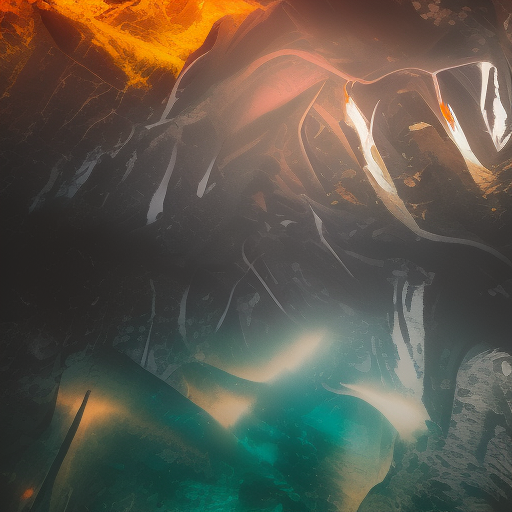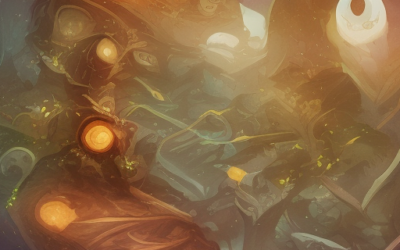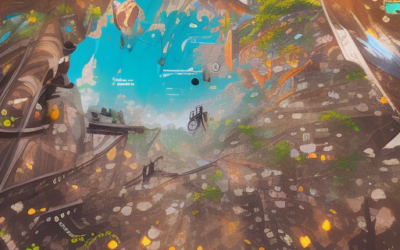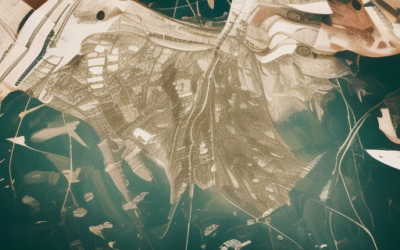Exploring the World Through Photography: A Journey of Discovery

1. The Power of Photography in Capturing Memories
Photography has the power to capture memories like no other medium can. It allows us to freeze a moment in time, preserving it for eternity. Whether it’s a cherished family photo, a breathtaking landscape, or a spontaneous street shot, photography has the ability to bring back those precious moments and allow us to relive them over and over again.
But photography isn’t just about capturing memories, it’s also about creating them. With every click of the shutter, we have the opportunity to create something new and beautiful, to explore the world around us and discover its hidden treasures.
Through photography, we can capture not just the physical world, but also our emotions and feelings. We can express ourselves in ways that words alone cannot convey. And by sharing our photos with others, we can connect with people from all walks of life, building bridges and breaking down barriers.
In short, photography has the power to transform our lives, bringing joy, inspiration, and a sense of wonder to everything we do. So whether you’re a seasoned photographer or just starting out, embrace the power of photography and let it take you on a journey of discovery.

2. The Art of Composition: Framing Your Shots
When it comes to photography, composition is everything. It’s not just about pointing your camera and clicking away; it’s about understanding how to frame your shots to create a visually appealing image. In this section, we’ll explore the art of composition and how it can take your photography to the next level.
Firstly, let’s talk about the rule of thirds. This is a basic principle of composition that suggests dividing an image into thirds both horizontally and vertically, and placing important elements of the image at the intersections or along the lines. This technique can add visual interest and dynamic tension to your photos.
Another important aspect of composition is leading lines. These are lines in the photo that lead the viewer’s eye towards the main subject. For example, a road leading off into the distance can be used as a leading line to draw attention to a distant building or landscape.
Framing your shots is also crucial to good composition. This means thinking about the edges of the photo and using them to guide the viewer’s eye. For example, if you’re taking a photo of a person, you might frame them so that their head is slightly off-center, drawing the viewer’s eye to their face.
Finally, negative space is another important element of composition. This is the empty space around the main subject of the photo. Using negative space effectively can add balance and emphasis to your images.
By mastering these techniques, you can take your photography to new heights and create stunning images that truly capture the beauty of the world around us. So grab your camera and start experimenting with composition – who knows where it will take you!

3. The Beauty of Black and White Photography
Black and white photography has a timeless quality that captures the essence of a moment in time. It allows the viewer to focus on the subject matter and the composition of the photograph, rather than being distracted by color. In this section, we will explore the beauty of black and white photography and how it can enhance our understanding of the world around us.

4. The Impact of Light on a Photograph
Light plays a crucial role in photography, shaping the mood and atmosphere of a photograph. It can create drama and depth, drawing attention to certain elements in the image and making them stand out. Without light, a photograph would be nothing more than a flat, lifeless image.
The way light falls on a subject can completely change the look and feel of a photograph. For example, bright, direct light can create harsh shadows and highlights, while soft, diffused light can create a more gentle, subtle look.
In addition to its impact on the overall look of a photograph, light can also affect the exposure of an image. Proper exposure is essential for capturing details and colors accurately, so it’s important to understand how different types of light affect the camera’s sensor.
Overall, the impact of light on a photograph cannot be overstated. It is a key element in creating stunning images that tell a story and evoke emotion. Whether you’re shooting a landscape, portrait, or still life, understanding the power of light is essential for creating compelling photographs.

5. The Importance of Contrast in Photography
Contrast is one of the most important elements in photography, as it helps to create depth, dimensionality, and visual interest in an image. It is the difference between light and dark areas within a photograph, and can be created through various means such as exposure, contrast adjustments, and post-processing techniques.
In photography, contrast is used to draw attention to specific parts of an image, and to guide the viewer’s eye towards the main subject. Without contrast, an image may appear flat and uninteresting, lacking the dynamic range and depth that makes a photograph truly compelling.
There are several ways to enhance contrast in a photograph, including adjusting the exposure settings, using filters or graduated neutral density filters, and applying contrast adjustments in post-processing software. These techniques can help to bring out the details and textures in an image, and can be particularly useful when shooting in challenging lighting conditions.
The importance of contrast in photography cannot be overstated. It is a key element in creating stunning images that capture the viewer’s attention and evoke emotion. Whether you are a seasoned photographer or just starting out, understanding the power of contrast and how to use it effectively is essential for taking your photography to the next level.

6. The Role of Color in Photography
Color plays a crucial role in photography, adding depth and emotion to an image. It can evoke different feelings and moods, and can be used to draw attention to certain elements within a photograph. Understanding the role of color in photography is essential for creating impactful images that tell a story.

7. The Different Styles of Photography
There are many different styles of photography, each with its own unique approach and set of rules. Some photographers prefer to focus on capturing moments as they happen, while others take a more calculated approach to their shots. Still others use advanced techniques such as long exposures or multiple exposures to create stunning images.
One popular style of photography is street photography, which involves capturing candid moments in public places. This can be done with a wide-angle lens to capture the entire scene, or with a telephoto lens to zoom in on specific subjects. Another popular style is landscape photography, which involves capturing the beauty of nature in all its glory. This often requires careful planning and an understanding of light and composition to achieve the desired effect.
Portrait photography is another well-known style, which involves capturing the essence of a person through their facial expressions and body language. This requires a good understanding of lighting and posing to create flattering images. Finally, there is fine art photography, which involves creating images that are purely aesthetic and not necessarily representational. This can involve using abstract shapes and colors to create a mood or atmosphere, or manipulating the image in post-processing to create a unique look.
Each style of photography has its own challenges and rewards, and it’s up to the photographer to decide which one best suits their vision and creative style. Whether you’re a seasoned pro or just starting out, exploring the different styles of photography can be a great way to expand your horizons and discover new ways of seeing the world around you.

8. The Benefits of Travel Photography
Travel photography is a unique form of storytelling that allows us to capture memories from our journeys around the world. It not only helps us preserve these moments, but it also allows us to share them with others and inspire them to explore the world themselves. Here are some of the benefits of travel photography:
1. Inspiring Others: One of the most significant benefits of travel photography is its ability to inspire others. When we share our photos with others, we can spark their curiosity and desire to explore new places. This can lead to a greater appreciation for different cultures, traditions, and ways of life.
2. Preserving Memories: Travel photography is an excellent way to preserve memories from our trips. Whether it’s capturing the beauty of a sunset over the ocean or the joy on someone’s face while trying local cuisine, these images serve as a reminder of the experiences we had and the people we met along the way.
3. Documenting History: By capturing historical landmarks, cultural events, and everyday life, travel photographers play an essential role in documenting history. These images provide a visual record of how things were at a particular time and place, allowing future generations to understand and appreciate the past.
4. Developing Creativity: Travel photography requires creativity and a keen eye for composition. As we explore new places, we learn to see the world differently and develop our artistic skills. This process of discovery and growth is incredibly rewarding and can have a positive impact on other areas of our lives.
5. Building Connections: Travel photography allows us to connect with people from different backgrounds and cultures. By sharing our experiences and photos, we can break down barriers and build meaningful relationships with those we meet along the way.

9. The Thrill of Capturing Wildlife in Action
Wildlife photography is a thrilling and exciting way to capture the beauty and power of nature. It allows us to witness and document the amazing moments of animals in their natural habitats. Whether it’s a majestic lion roaring in the African savannah or a graceful swan gliding across a serene lake, wildlife photography captures the essence of these incredible creatures in stunning detail.
The thrill of capturing wildlife in action lies in the challenge of getting close enough to the subject without disturbing its natural behavior. This requires patience, persistence, and a deep understanding of animal behavior. It also requires the right equipment, including powerful telephoto lenses and fast shutter speeds, to capture the action at the right moment.
For those who love adventure and the great outdoors, wildlife photography offers a unique opportunity to explore the world and connect with nature in a deeper way. It allows us to see the beauty and wonder of the natural world and to share that experience with others through our photographs.
Whether you’re a seasoned photographer or just starting out, wildlife photography is a journey of discovery that never gets old. Every time you capture a stunning image of a wild animal in action, you feel a sense of accomplishment and joy that comes from connecting with the natural world in a meaningful way. So why not grab your camera and head out into the wilderness? The thrill of capturing wildlife in action is waiting for you!

10. The Joy of Creating Art through Photography
Photography is not just a way to capture memories, it is also a form of artistic expression. When we take a photograph, we are not just capturing a moment in time, we are creating something beautiful and unique. The act of composing a shot, playing with light and shadow, and experimenting with different angles and perspectives can all be a form of creative expression.
For some people, photography is their passion and their art. They spend hours perfecting their craft, honing their skills, and seeking out new and interesting subjects to photograph. They find joy in the process of creating something visually stunning, and in sharing their work with others.
Photography has the power to evoke emotion and tell a story without using words. It can capture the beauty of nature, the drama of a stormy sky, or the intimacy of a close-up portrait. Whether you are a professional photographer or a hobbyist, there is something special about the act of creating art through photography.
So, if you are looking for a way to express yourself creatively, why not try your hand at photography? You may be surprised at how much joy and fulfillment it brings you.




